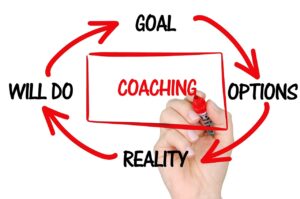Have you heard of a somatic coach, and are wondering what somatic coaching is?
In this post I’ll cover what somatics is, the definition of a somatic coach, and what happens during somatic coaching.
I hope this post is helpful for learning about what somatic coaching CAN entail. But, in my experience the best way to grasp it is to book a couple sessions. If you’re stuck on a mindset issue, old patterns, or stressor and you’ve tried other methods without experiencing change: I’d love to support you. Buy a session here, or read the rest of the post first and peep the link again at the bottom.
Table of Contents
ToggleIntroduction to Somatic Coaching
In the world landscape of personal development, the art of somatic coaching is emerging as a powerful tool. The beautiful thing about this essential work is how it encourages self-discovery and self leadership. Rooted in the understanding that the body is a repository of wisdom, successful coaches who understand somatics delve into the realms of past trauma without re-traumatizing people. It invites us to embrace the present moment with a fresh perspective.
As we navigate daily life, somatic work acts as a compass, illuminating new awareness through our physical experiences. The first step into this journey involves cultivating a somatic experience. In other words: we have to begin by fostering an awareness of the dance between physical sensations, the inner world, and the centering practice that grounds us in the present moment.
This is real embodiment.
In the tapestry of everyday life, somatic coaching becomes a beacon of emotional releases and lasting changes, creating a space for individuals to reconnect with their feeling selves. The core principles of somatic opening, a journey into the mental state, and an understanding of the whole self are woven into the fabric of the program, fostering an exploration of the autonomic nervous system and embodiment practices.
Somatic psychology becomes a guiding light in effecting sustainable changes, empowering participants to take skillful action in their healing journey. The program unfolds as a powerful body-oriented framework, addressing emotional health and fostering new relationships with oneself that go beyond just mindset work.
What is somatics?
The word “somatic” refers to the physical body. Somatic coaching helps people gain insight by looking at both 1) tuning into and tracking their physical sensations and 2) emotions, perceptions and experiences. Somatics is a term used in therapeutic work that involves the body. The word “somatic” indicates that the approach is based on the soma, or “the physical body as perceived from within”.
Somatic techniques may be used in coaching, therapy, bodywork, psychotherapy, dance, or spiritual practices.
The goal of any work including somatics involves gaining insight and clarity while tapping into your internal experience – how you emotionally feel – with your external experience – how you physically feel.
Involving body awareness in healing and mindset modalities often leads to much deeper and faster insights. The body holds immense wisdom outside of the mind because of its connection to your nervous system. Leveraging my body’s wisdom helped me overcome my deeper mindset issues much faster than only using my mindset.
Examples: Lifelong anxiety gone in one session. Emotional releases in one session that didn’t happen in years of therapy. Immediate mindset shifts that aren’t possible when you only focus on the mind
Why dos somatic work have the potential for this unique healing and/or progress?
One reason is because of the tie with the nervous system. The ventral vagus nerve communicates from the body to the brain, and from the brain to the body. And get this: 80% of the ventral vagal nerve fibers send information from the body to the brain\ and only 20% of its fibers send information from the brain to the body.
(Read more: Trauma Effects on Mindset)
What is a Somatic Coach?
So what is a somatic coach, and what does a somatic coach do?
The body often knows things our brain is slower to process, and connecting with a somatic coach can speed up the process of extracting that wisdom.
A somatic coach guides clients in tuning into their body to get to the root of mindset problems, patterns, thoughts or any area a client feels stuck.
They physical sensations that arise from emotion to extract wisdom, messages or memories that exist.
What does a somatic coach do?
When coaching from a somatic perspective, coaches prioritize putting attention towards the body and what the body feels. In today’s fast paced world, we often pride ourselves on ignoring things we feel in the body. We get pat on the back for being strong and carrying on no matter what.
But your body usually responds to external signals before your mind does – plugging in to what is happening around you and inside you before the brain does.
For example, ever felt that sinking feeling in your stomach? That’s your body’s intuition to pay attention to something that feels uneasy, and get your brain to figure out what is going on and what to do.
What are the benefits of the somatic approach?
The somatic approach is gaining popularity in the field of mental health and wellbeing (and even in physical health) due to its ability to bring positive change more quickly. This approach focuses on the mind-body connection and uses physical sensation to target the nervous system, improve breathing and increase awareness of the clients’ emotions and sensations. Clients draw connections during sessions, and leave empowered with new awareness. The benefits of this approach are mental clarity, inner peace and balance, and a greater ability to relax and cope with stress.
Somatic practices have also been shown to reduce symptoms of depression, anxiety, and trauma. It empowers people to gain a greater sense of self-awareness and understanding of the sensations that accompany their emotions.
What happens in a somatic coaching session?
What happens in a somatic coaching session is determined by the type of coach or session you’re looking for, your goal for the session, future goals, and your level of comfort and feeling of safety.
But an emerging and popular type of somatic coaching style involves life coaching utilizing somatics. This makes sense, since somatic work can often help untangle limiting beliefs, the root of stressors, and more.
Somatic coaching sessions create a safe coaching space where people can focus on their own bodies, maybe for the first time. The aim is to produce well-rounded self care and embodiment, versed not only in the field of somatics and the body, but also helping us address mental health issues through somatic techniques like breathwork. (I first discovered somatics through breathwork and got my somatic coaching certification from the Pause Breathwork certification program.)
The human body is a repository of coping mechanisms and internal experiences. With somatic work, it becomes the focal point of a transformative journey. Somatic coaching unveils the wisdom of the body, as we are best served by an integrative approach that transcends the limitations of our MIND alone.
Somatic Coaching Techniques
In this post, i’m covering my own experience of somatic coaching techniques, which apply to a life coaching style of coaching. This is slightly different than somatic experiencing taught by Dr. Peter Levine, which is a process that more directly addresses trauma treatment through bodywork.
In coaching, a general flow for a somatic session includes…
- A short grounding exercise to step into the present and soften the mind
- Setting your intention or goal for the session
- Determining what needs to happen first in order for that intention to be accomplished
Depending on your intention, the flow of the coaching session can go many ways. But some possibilities include…
- Helping clients explore where they feel most activated in your body, and using different exercises to extract wisdom
- Using breath, movement, or sound to release energy or move stuck energy
- Using frameworks to help you combine your body and mind in thinking through a habit (for example, working backwards from results you’re getting to determine the beliefs that led you there, so we can start re-writing beliefs)
- Inner child work, meditation, visualization, emotional resourcing
- And more
And again: the exercises used in each session for helping clients explore their goal for the session can vary widely, and are completely driven by the client. When first starting out with somatic coaching, listening to your body might feel inaccessible or uncomfortable, and that’s ok.
A trauma informed somatic coach meets you where you are at!
How Do I Find a Somatic Coach Near Me?
To find a somatic coach near you, use online directories or search engines. You can use a generic search, and you can also find specific directories. Keep in mind that you don’t need to meet with a somatic coach in person to get great results. I personally have only ever been a client of somatic sessions online, and have still had epic experiences.
If you really need to find someone near you, here are some tips:
- Use a somatic coaching directory: I’m going to be honest in that this isn’t my favorite tip, but I think it’s worth mentioning. There are several online directories specifically designed to help you find somatic coaches. One is created by Somatic Experiencing – these are trauma practitioners that go through a three year certification. The other one I know of is created by Embody Lab. Some examples include the Somatic Experiencing Trauma Institute directory, the Somatic Psychology directory, and the Association for Somatic and Integrative Sexologists directory.
- Use a search engine: You can also use search engines such as Google to find somatic coaches near you. Try searching for keywords such as “somatic coach,” “somatic therapy,” or “somatic practitioner” along with your location.
- Search on social: A lot of coaches use social media, and will include the word “somatic” in their profile so you can find them through search. Try looking for somatic coaches in your area on Instagram and Facebook (and maybe TikTok).
- Ask for referrals: If you know someone who has worked with a somatic coach before, you can ask for a referral.
Examples of Somatic Sessions
I thought it might be helpful here to explain a few real live examples from clients, where information was general enough to be non-identifying for the client.
Here are some examples of how a somatic session can go:
Anxiety Around Money
In a recent session, I met with a client who had growing panic that would wake them up at night, about money. They knew it really wasn’t about money, and had tried many tools with some success, but the anxiety was still growing.
When we started tracking the sensation in the body, we eventually came upon a fearful memory from age 5, where safety and reassurance was needed.
The client was able to become proactive on finding safety, and learn what safety feels like.
Moving Stuck Energy
In a recent session, I met with a client who is going through an end of a relationship they initiated. Even though it was their decision, it was still very painful and this client was struggling to release the opinions of others (which would lead this client to be able to think more clearly for themselves).
When we started tracking the sensation in the body, it became clear that there was stuck energy in the body, preventing this person from using their voice, so we used a tool to release stuck energy.
The client was able to step into an extremely powerful and free version of themselves, which helped them use their voice in new ways.
Clearing Long Term Anxiety Instantly
In a recent session, a client was struggling with intense anxiety before going to work every night – to the point where it could take up to two hours just to get started, exacerbating the issue.
When we started tracking the sensation in the body, it first led us to a teen experience. And when we tracked that feeling, we were led to an experience at the age of 7. We spent time with the 7 year old. Then, coming back to the present, we practiced going back and forth between the anxious feeling, and the new feeling the client wanted to have. The anxiety went from feeling like a big black hole, to a tiny pebble.
The client’s long term anxiety dissolved in one session.
Prioritize Self Care
In a recent session, a client wanted to find ways to stay grounded in taking care of themselves. This client is going through a lot, so there were many, many physical sensations in the body that wanted attention. We made space for all of it, and also got clear on what needed the most attention.
A lot of grief and sadness came up, which we witnessed and nurtured. This turned out to be what the client really needed and had never had before: permission to feel. She immediately felt immense relief, and a proactive desire for the client to practice holding themselves (or finding ways to feel held) as a regular self care practice.
The client got reconnected with gratitude for their own existence.
Why I’m Avoiding Affection
In a recent session, a client expressed awareness and concern around avoiding their partner. Because they loved their partner, they wanted insight on the cause of their avoidance. Their goal involved understanding their own needs, while meeting the needs of their partner as well.
When we started tracking this, we eventually came to a very young version of the client, and a repeated interaction they had that caused them to be uncomfortable with even benign affection. We were able to help this client identify what they needed, and also find a way to communicate to their partner that they needed space in order to feel safe, while also learning more about the partner’s needs.
The client learned the source of their resistance.
What happens at the end of a somatic session?
At the end of a somatic session, I save time for discussion and any suggested action items for the client. I love asking how clients feel, what questions they have, and what they experienced. Then, I ask if it’s ok if I reflect back to them any of my own observations. I lastly mention anything they said that I want to make sure they remember.
I love suggesting action items, because I personally like having action items for myself when I’m a client. This helps me feel like i’m integrating what we just worked on, and could be journaling, setting boundaries, meditation, visualization, business planning, or more.
Some optional homework and action item ideas include:
- adding a new daily affirmation
- journaling
- go shopping for something special
- optimizing their work schedule for their creativity
Book a Somatic Coaching Session
Interested in booking a somatic coaching session to get unstuck in an area of your life?
Go here to learn more and book a session.
Photo: WorkplayBranding








